Paint blending is the key to painting realistically and this project gives students the skills necessary to blend colors.
After the art history lesson the teacher demonstrates blending with paint in front of the class while students follow along, blending spheres, cylinders, and random shapes.
Students start their project by lightly drawing random shapes and lines on their paper, being sure to include lines that bend or angle. Angled and bent lines imply movement and make the lines look alive and organic.
Next students work on the individual shapes. It's recommended that students start with the base color and then add a darker or lighter version of that color while the first layer is still wet so that the two colors can be blended together with the brush. After one shape is finished the student moves on to another shape. Each shape should include some blending so that the shape looks 3-D.
When all the shapes are painted, the lines defining the shapes are traced over with a black glue to make slightly raised black lines.
Evaluation:
2 point -- Variety of shapes
3 points -- Implied Motion shown
4 points -- Blending from light to dark
1 points -- Careful use of black glue to outline shapes
10 points total
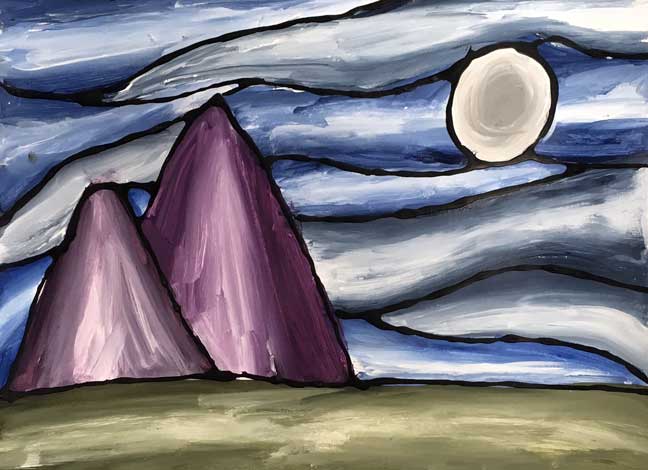
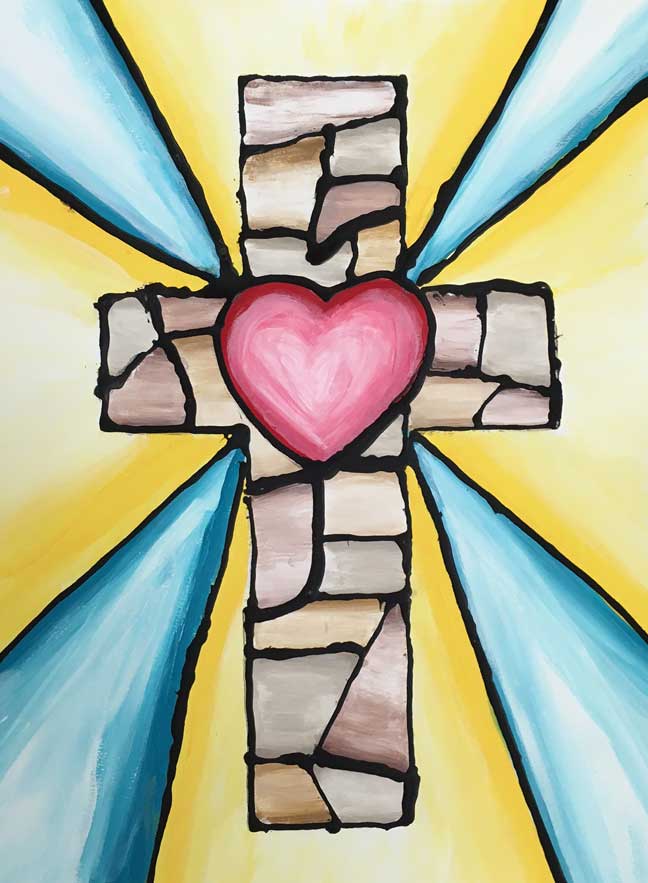
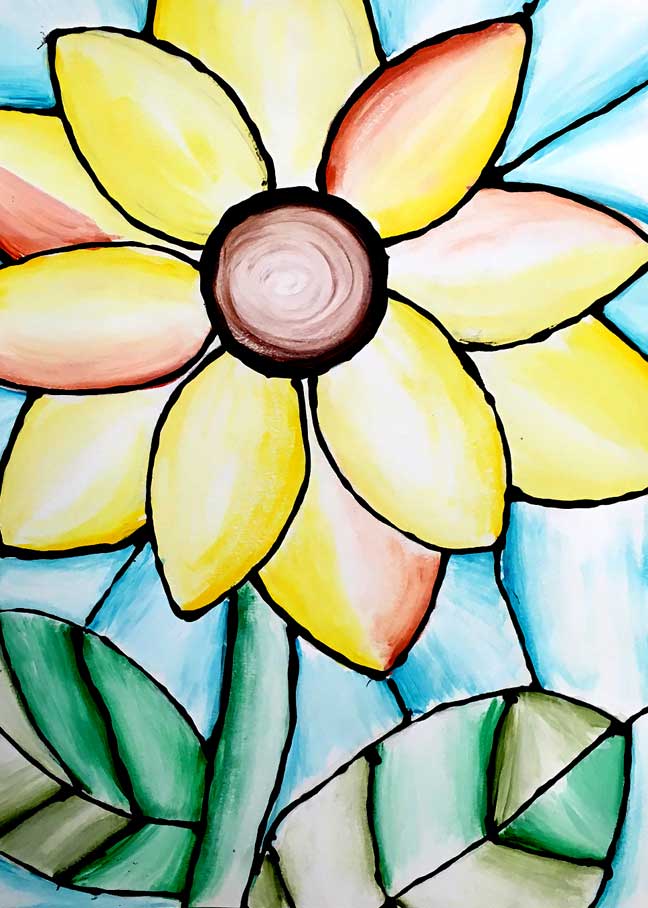
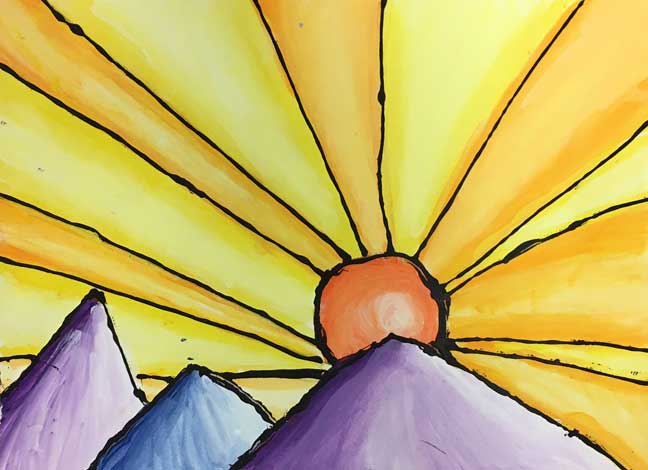
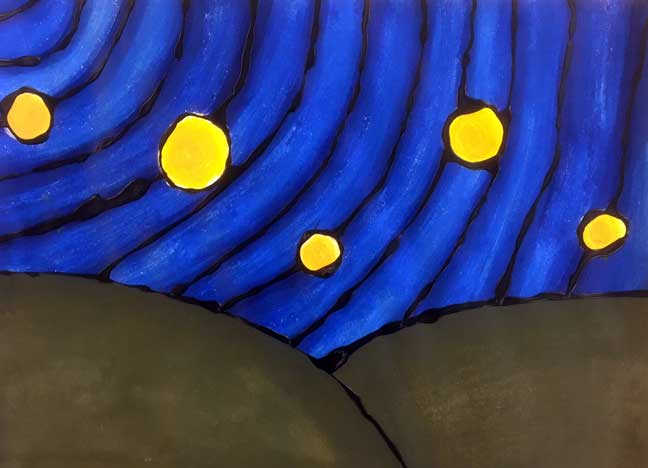
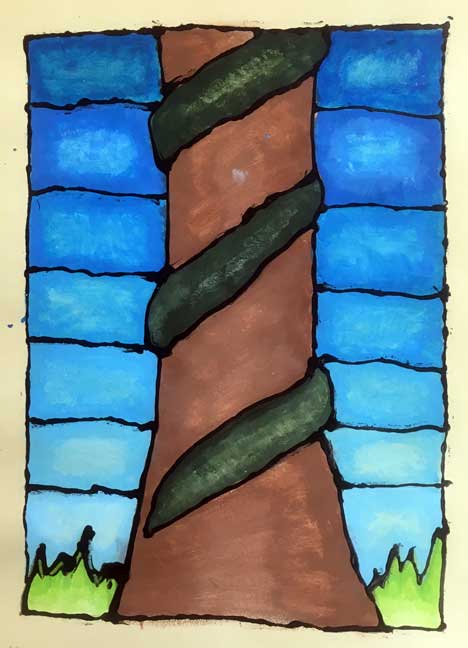
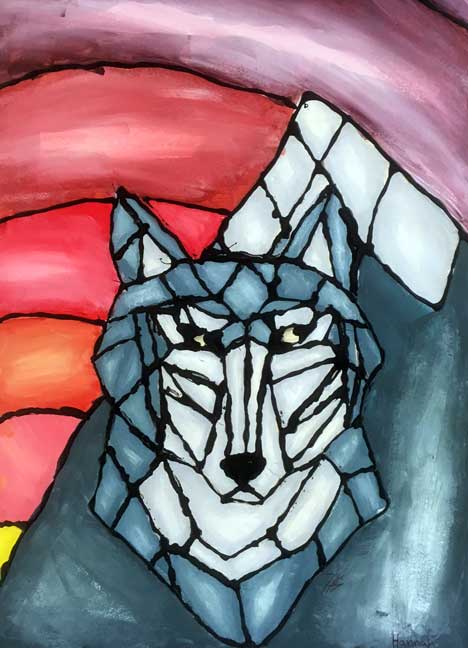
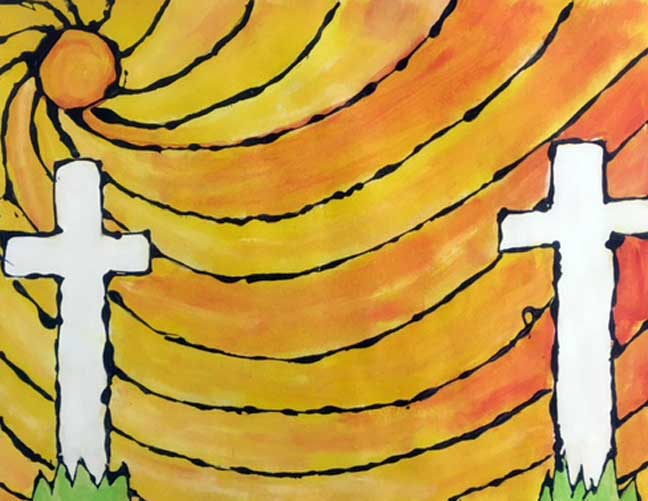
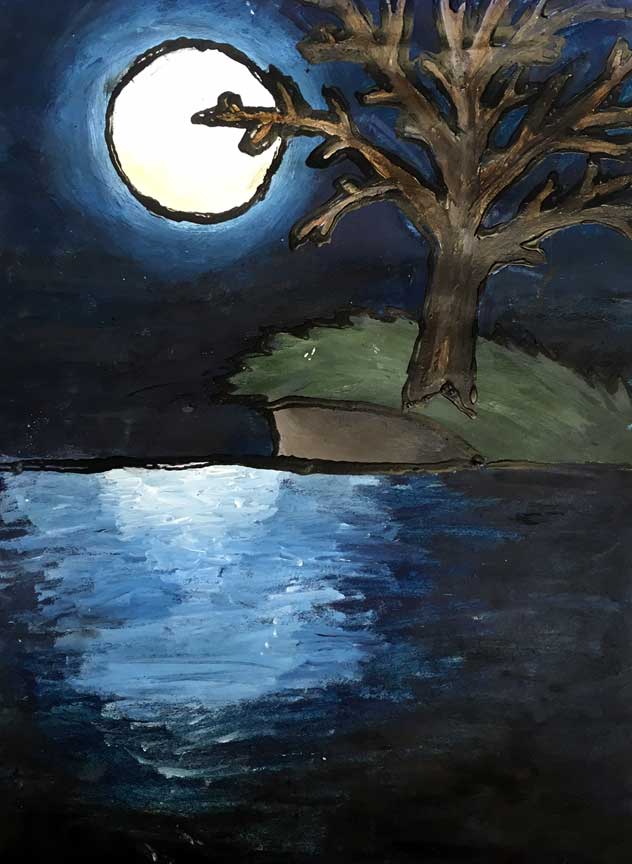
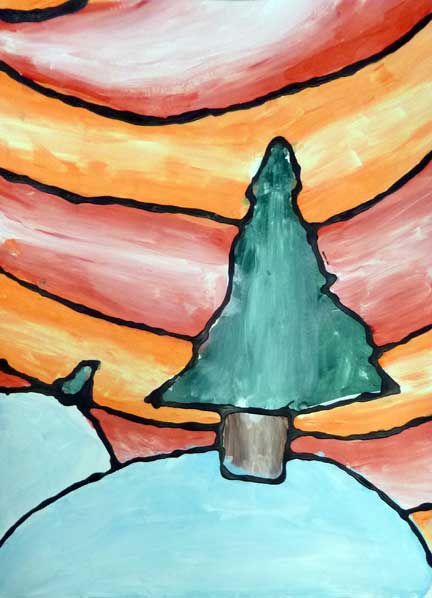
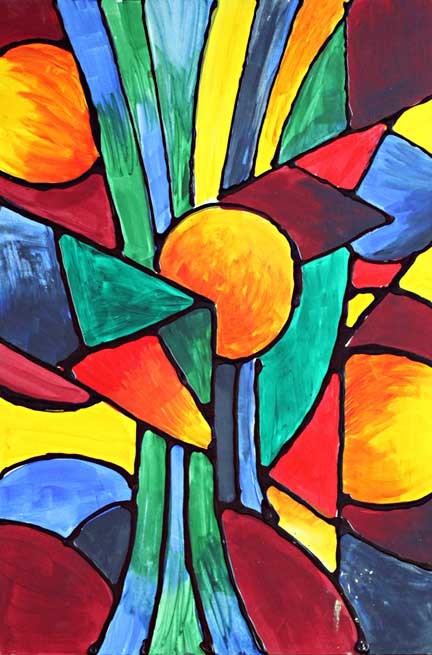

2 point -- Variety of shapes
3 points -- Implied Motion shown
4 points -- Blending from light to dark
1 points -- Careful use of black glue to outline shapes
10 points total













